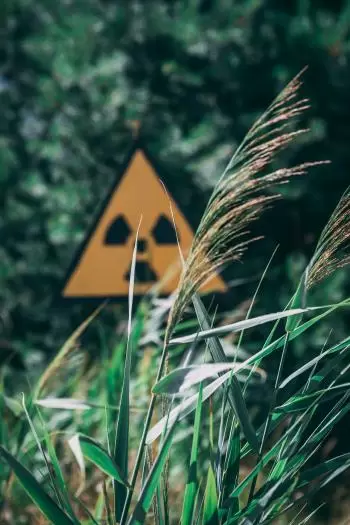
The word "radiation" refers to the energy that travels through space in the form of waves or particles. It occurs when atoms disintegrate and release alpha, beta, and gamma particles.
Radioactive material is one that emits these radiations (alpha, beta, or gamma) without the need for any external source. If we are strict with this definition, all existing materials contain radioactive isotopes, including people. However, most do not present any health hazards and do not require any type of protection.
When the radioactivity is large enough to require protection, the term used is radioactive substance.
What are radioactive materials?
Radioactive material is material that contains radioactive particles. They are atoms that spontaneously decay, releasing radiation. Radiation can harm the human body if exposed for an extended period.
These materials are used in various contexts, for example, in medicine and research. For instance, radioactive material is used in medicine to treat diseases such as cancer.
Nuclear waste
Nuclear waste is the material that results from the use of nuclear energy. Some examples of nuclear waste are the fuel used in nuclear reactors, fission products, and radioactivity waste.
What is radioactivity?
Radioactivity is a natural or artificial phenomenon by which some chemical elements disintegrate with any external influence. Due to the decay, they emit radiation and release energy.
Most of them are stable, but some are unstable and decay over time. In general terms, the rate at which these reactions occur differs for each radioisotope.
As we have said before, it can be natural or artificial. The so-called natural radioactivity is the emission of ionizing radiation that occurs naturally inside the Earth. It also occurs in all parts of the world, being present in all living beings. An example of it is uranium atoms, the main nuclear fuel source used in nuclear power plants.
Types of radiation
Radiation can be shown by the emission of three types of particles:
-
Alpha radiation: alpha particles consist of positively charged particles. It has a reduced range and does not penetrate the skin or even a sheet of paper. However, this type of particle is dangerous if inhaled or ingested and can damage our health severely.
-
Beta radiation is less harmful than alpha. In addition, most of the beta particles stop at the skin or by using a simple piece of paper.
-
Gamma radiation: A gamma ray is a type of electromagnetic wave similar to light but with a much higher frequency. It is highly penetrating and can be very damaging.
Examples of radioactive materials
Here are some examples of these kinds of materials:
-
Uranium is the most abundant radioactive substance on the background levels of Earth and is found in rocks and minerals. Plutonium is an artificial element created in nuclear reactors. Both are used as nuclear fuel. Still, before use in a nuclear reactor, this material needs to be treated to make it more unstable.
-
Transuranium elements have an atomic number greater than 92 (uranium). Due to their structure, these elements are highly unstable and quickly break down into other substances.
-
Radium and radon occur naturally as a result of radioactive decay elements in soil, being a major cause of cancer. Radium is found in small quantities in nature. These decay products are daughter products of uranium and thorium.